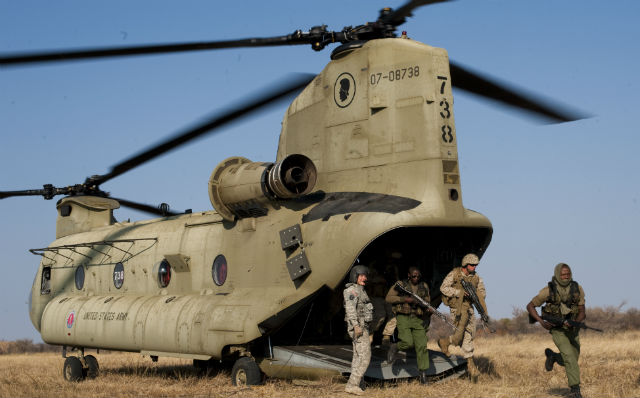Testing of a BAE Systems fly-by-wire alternative for mechanical helicopters – the active parallel actuator subsystem (APAS) – will begin in January 2015 with the US military’s Boeing CH-47 Chinooks, the company confirms.
APAS is a tactical cueing system and will be trialled on CH-47F and G models.It is derived from a similar active inceptor system technology designed by the company for fast jets – notably the Lockheed Martin F-35 – and serves to cue the pilot and provide tactile feedback, improving handling, increasing situational awareness and reducing pilot workload.
“We’ve taken this capability and applied it to mechanical helicopters,” Adam Taylor, director of advanced inceptors at BAE’s Electronic Systems division, told a media briefing at the company’s Rochester, Kent site on 25 June. “It is a spin-off of our active stick solutions. Customers are looking to this technology to link across the cockpit – something you don’t get with passive controls.”
The testing is being conducted by a consortium of parties including the US Army and Special Operations Command, alongside Boeing and BAE, and is expected to conclude in nine months.
“We’re all working collaboratively to get this test going,” Taylor says. “And there is still some intent to make this field-retrofittable.”

US Department of Defense
Fly-by-wire technology is deemed a more complicated integration than active controls, which are easier to add while having a similar effect.
Should the testing be successful, a production contract for BAE is expected at some point in 2015. Taylor notes that weight reduction of APAS is one development area the company will work on in the run up to qualification.
APAS development is being run in parallel with the Chinook Block II upgrade programme – expected to be complete in 2017-2018 – but Taylor expresses a wish for APAS to be included within the Block II programme in the future.
BAE was also contracted to provide an active control system for the US Army’s Sikorsky UH-60 Black Hawk helicopter, under a programme that aimed to integrate active controls and fly-by-wire technology into the type.
The programme was subsequently put on hold in 2009, although the BAE system has qualified should the army wish to take up the integration again.
BAE’s active control systems are also gaining traction in the commercial market, for which it received its first contract in 2010 – integration with an undisclosed platform currently in development. It also willintegrate the system for Embraer's KC-390 transport and in-flight refuelling tanker.
Qualification for both platforms – which began on 24 June – will be carried out in parallel, and are expected to be certificated by 2016.
“They see this as a differentiating technology,” Taylor says, referring to the undisclosed customer. “It’s a new aircraft being developed by an OEM with two new technologies on it – one of these is the active stick.”
Source: Flight International



















